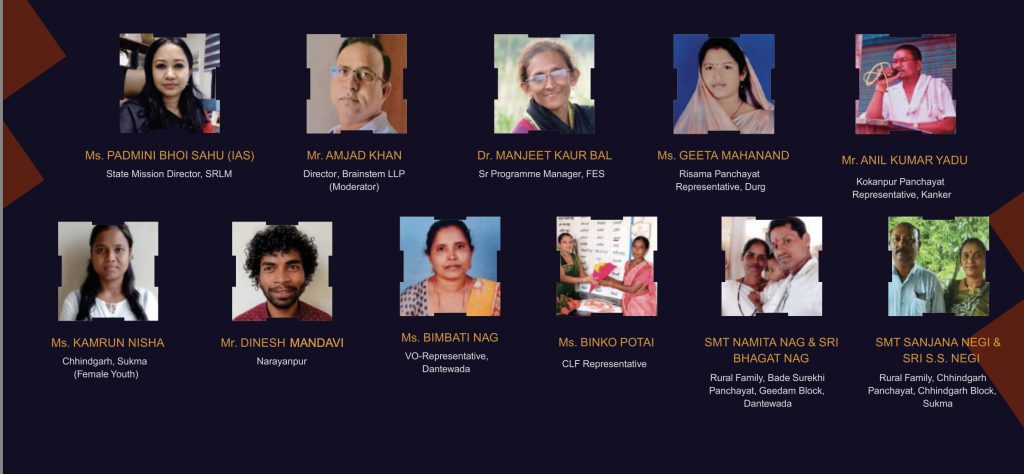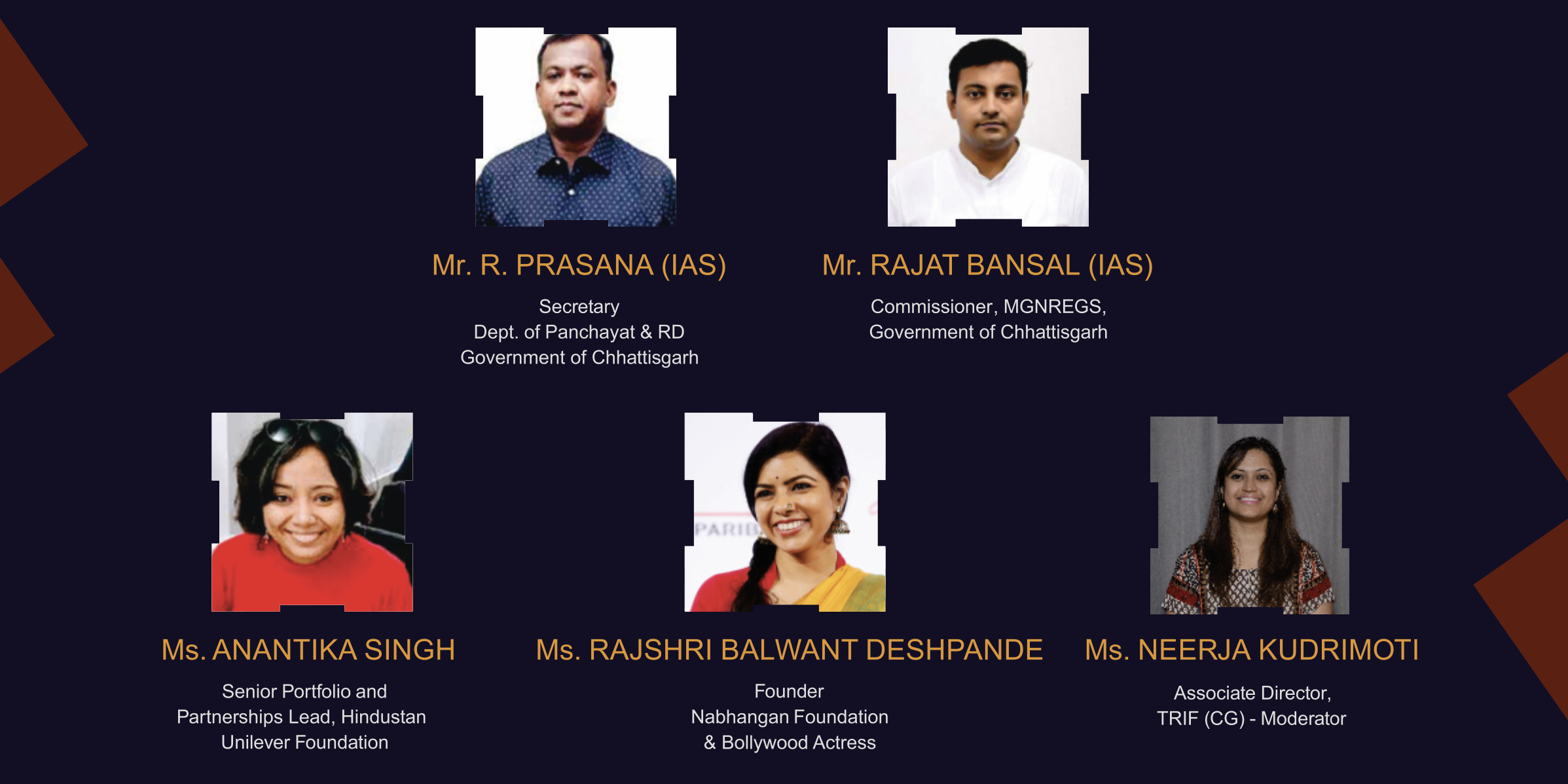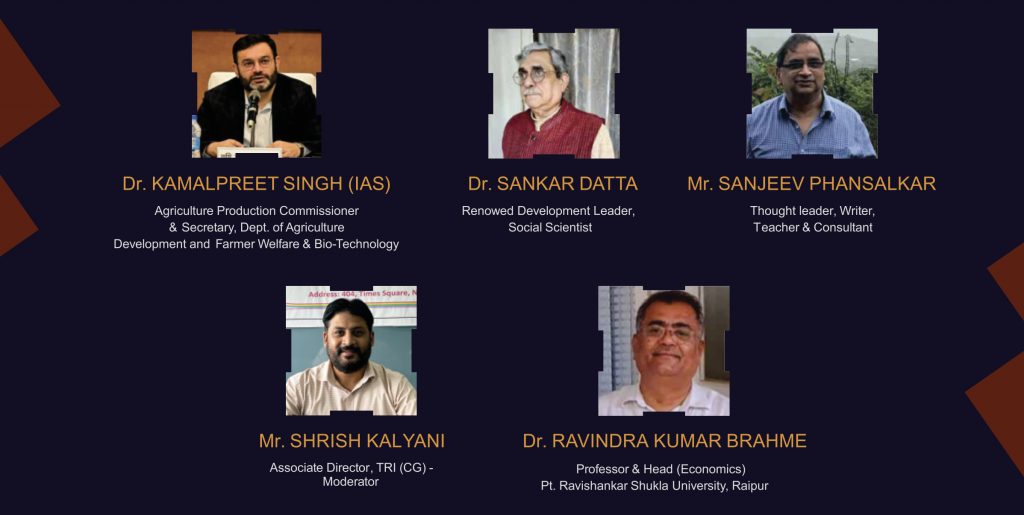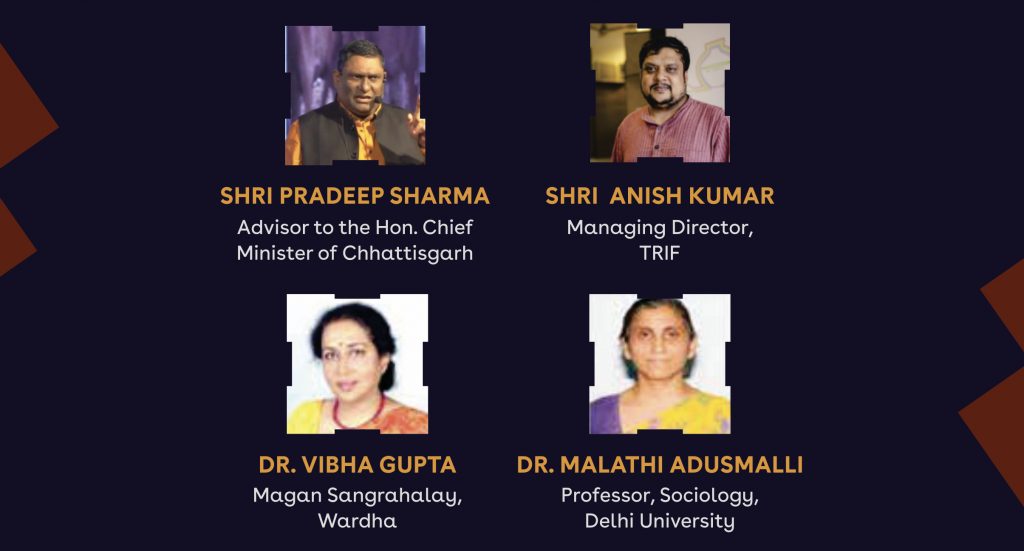Notification
22 July 2023 | Raipur
Samaj, Sarkar and Bazaar in the New Villages
📍HBI
- 9:15 AM - 11:45 AM
Deep Dive into Billion Dreams
Rural communities in India are undergoing significant transformations, shaped by various factors like socio-economic changes, environmental challenges and technological advancements. As these communities evolve, it becomes crucial to gain a deeper understanding of their aspirations and develop strategies to support their development. The session brings together rural communities – from researchers and practitioners to donors and policy makers – to exchange knowledge, foster collaboration and develop actionable strategies to support the evolving aspirations of rural communities.

- 12:00 PM - 1:15 PM
Regenerative Development: A Whole of Society Approach
The last couple of years have been historic in realising the long-term dream of Panchayat Raj Institutions becoming a unit of convergence. With community-based organisations (CBOs) and the local administration working together, many more development interventions have been implemented. This “whole of society” and “whole of government” approach, which aligned various development verticals, means guidelines have been revised, frameworks issued and grants allotted. Also, aggregating 17 of the UN’s Sustainable Development Goals into 9 broad themes with joint resolutions from 26 departments working together has provided the country with new hope and belief that the rural communities can be healthy, educated, socially secure, gender sensitive, water sufficient, clean and green with people’s participation. This session delves into the historic approach of converging CBOs (SHG Systems, FPOs, Gram Gauthan Samitis and other collectives) with PRIs and local administrations. We will provide them a platform to discuss, deliberate and decide what is important at the local level and jointly prepare the development plans (VPRP-GPDP).

- 2:00 PM - 3:15 PM
The Complementary Role of Samaj-Sarkar-Bazaar in the Future of Rural Society
The quest for a good society begins with positioning samaj as the foundational sector keeping the state and markets accountable to the wider public. This is where the rural renaissance is headed. But given the complex societal problems of contemporary India, we need all three sectors to work in tandem and with mutual respect. There is a need to develop alternative models of partnerships with markets and governments to bring about a lasting change aligned with the aspirations of communities. To break the interlock of low growth and development, low investments and endowment deficits, the samaj-sarkar-bazaar need to become the collective first responders to address these issues. Chhattisgarh has repeatedly seen citizen participation, especially during the pandemic, where the samaj was the first responder, with the support of government and markets. This conversation will dive deeper into the complementary role of samaj-sarkar-bazaar with examples from the state.

- 3:30 PM - 04:45 PM
The Making of a New Village: Interrogating Caste and the Impact of Occupational Shifts on Inter-generational Mobility
Immediately after independence, the leadership in India emphasised community development with new modes of production and new institutions like cooperatives. Initiatives like Mazdoor Manzil in Niolkheri, with considerable involvement of SK Dey, Minister for Community Development in the first cabinet, focused on village and local industries. One of the underlying assumptions was drawn from the Gandhian Sarvodaya experience, which showed shifts in occupations leading to an increase in social mobility opportunities. The efforts by the Chhattisgarh Government of Rural Industrialisation are a significant departure from this and is an opportunity for tradition-bound occupational associations, like gudis, to break free and embrace new productivity drivers and vocations. This session seeks to learn from the experiences of the state and the impact on structural barriers. We want to embed the insights, best practices and learning in management and governance of the Chhattisgarh Government’s -RIPA programme, specifically informing the choice of enterprises and the support-structures that reduce caste-led barriers to economic growth and increase inter-generational mobility.

- 6:30 - 8:00 PM
- 8th August, 2021 Sunday
Transforming Opportunities and Quit Poverty| Society, State & Markets
NN Sinha, Hari Menon, N Srinath*, Anurag Behar, in conversation with Isabel Guerrero
Over the last 75 years, there has been a significant impact driven by civil society organizations, the government, and the rural community themselves in addressing deprivations in rural India through poverty alleviation programmes. However, there are wide disparities across the nation due to diversity that exists within various geographies, cultural and social contexts. In rural India, particularly in the villages of Central and East India, these challenges are further exacerbated by abject poverty and intersectionality of hierarchies especially in tribal, Dalit and other historically marginalised communities. A girl child born in rural India is two generations behind her sister in urban India and this gap continues in her lifetime. Illuminaries in the sector reflect on the opportunities that exist and the pathways needed to break the vicious poverty cycle.
A grassroots foundation, deeply focused on challenges faced by marginalized communities and in particular of women in the bottom 100,000 villages of India. We bring a deep knowledge and an inventory of working solutions for stranded India and mechanisms for scaling-up those solutions.

